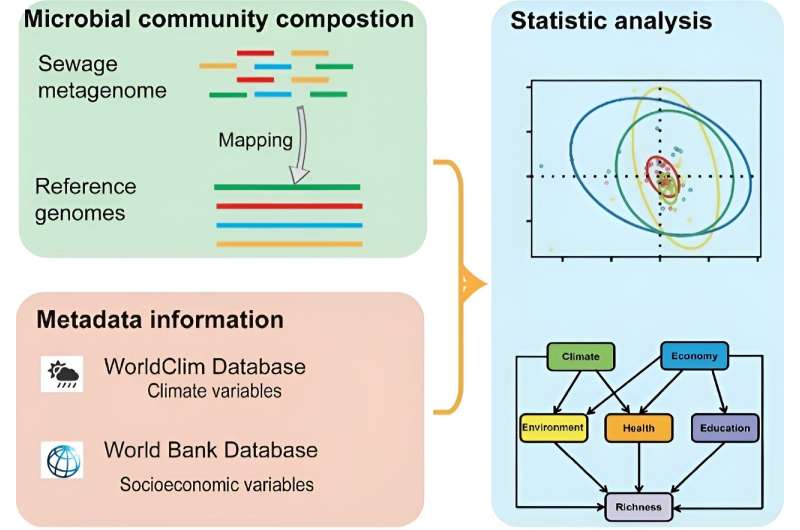This article has been reviewed according to Science X's editorial process and policies. Editors have highlighted the following attributes while ensuring the content's credibility:
fact-checked
proofread
Sewage secrets: Economic factors shaping our microbiome exposed

Understanding the global distribution and drivers of the human microbiome is crucial for public health and environmental management. Previous studies have focused mainly on regional gut microbiomes, leaving a gap in our understanding of how socioeconomic factors shape these communities on a global scale. A recent study addresses that gap, offering valuable insights into the interplay between economic conditions, human health, and microbial diversity in sewage.
Conducted by the Nanjing Institute of Geography and Limnology, Chinese Academy of Sciences, the research was published on August 1, 2024, in Frontiers of Environmental Science & Engineering.
The study examined 243 sewage samples from 60 countries across seven continents, using a metagenomic framework to identify 95.03% of human-associated microbial species. It revealed the climatic and socioeconomic factors that drive microbial diversity and composition in sewage.
The research identified distinct global patterns in the human sewage microbiome (HSM), with species richness increasing at higher latitudes and notable differences between developed and developing regions. Economic factors, such as export values and social security, were found to play a key role in shaping microbial diversity in sewage. Developed regions like Europe and North America exhibited more uniform microbial communities while developing regions showed greater variability.
These findings highlight the influence of local socioeconomic conditions on the human-associated microbes found in sewage, suggesting that sewage analysis could serve as a powerful tool for monitoring public health and environmental changes. This study provides new insights into how human activities and economic conditions drive global microbial diversity.
Dr. Jianjun Wang, the senior researcher, stated, "Our findings highlight the critical role of socioeconomic factors in shaping the human microbiome. The distinct microbial patterns across continents, linked to economic variables, open new possibilities for using sewage as a non-invasive tool for global health monitoring."
The insights from this study could have a significant impact on public health and environmental strategies. By utilizing sewage analysis, authorities can gain a better understanding of microbial diversity linked to socioeconomic conditions, enabling the development of targeted interventions to mitigate health risks and improve ecosystem management globally.
More information: Minglei Ren et al, Socioeconomic drivers of the human microbiome footprint in global sewage, Frontiers of Environmental Science & Engineering (2024). DOI: 10.1007/s11783-024-1889-z
Provided by Nanjing Institute of Geography and Limnology




















